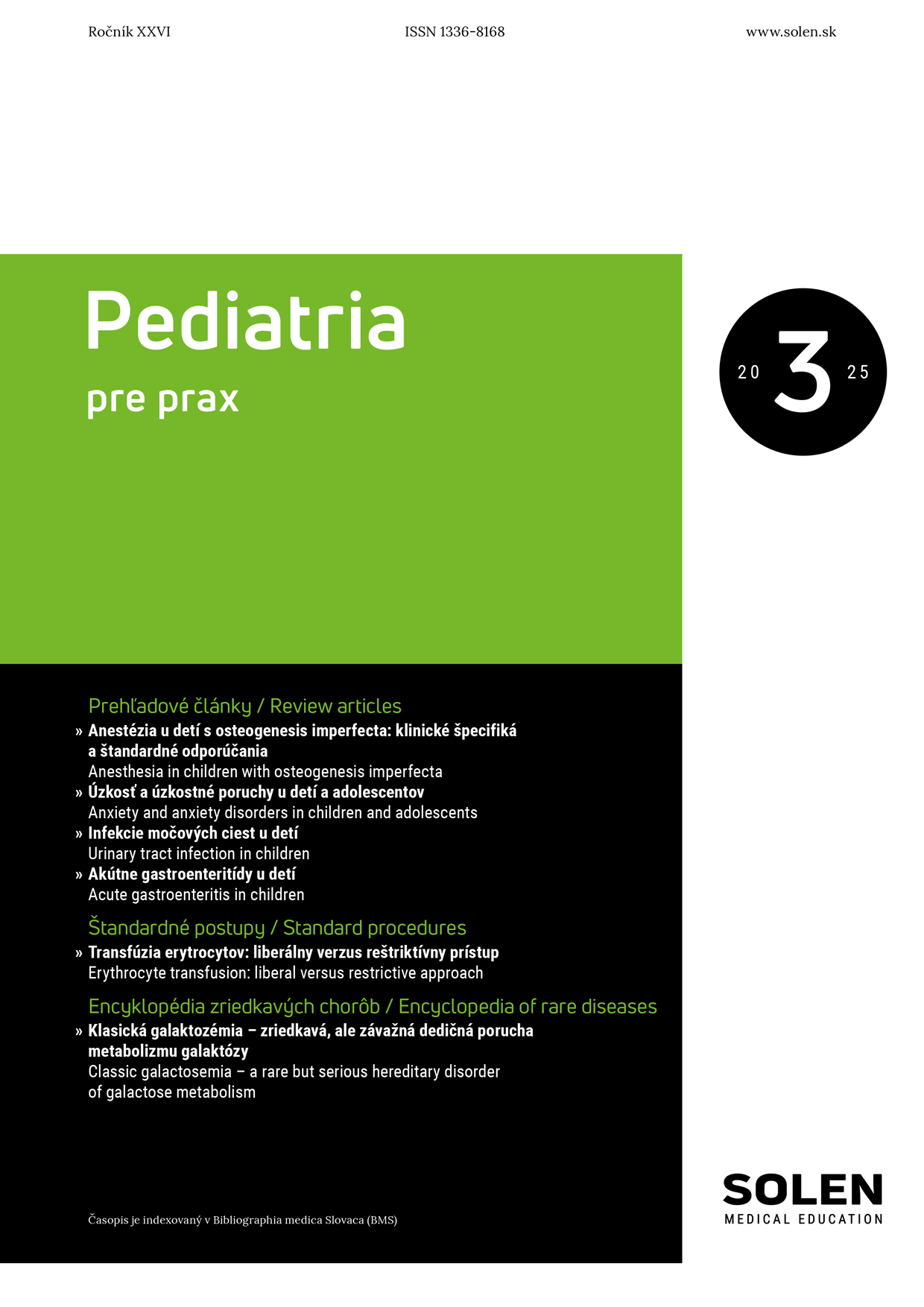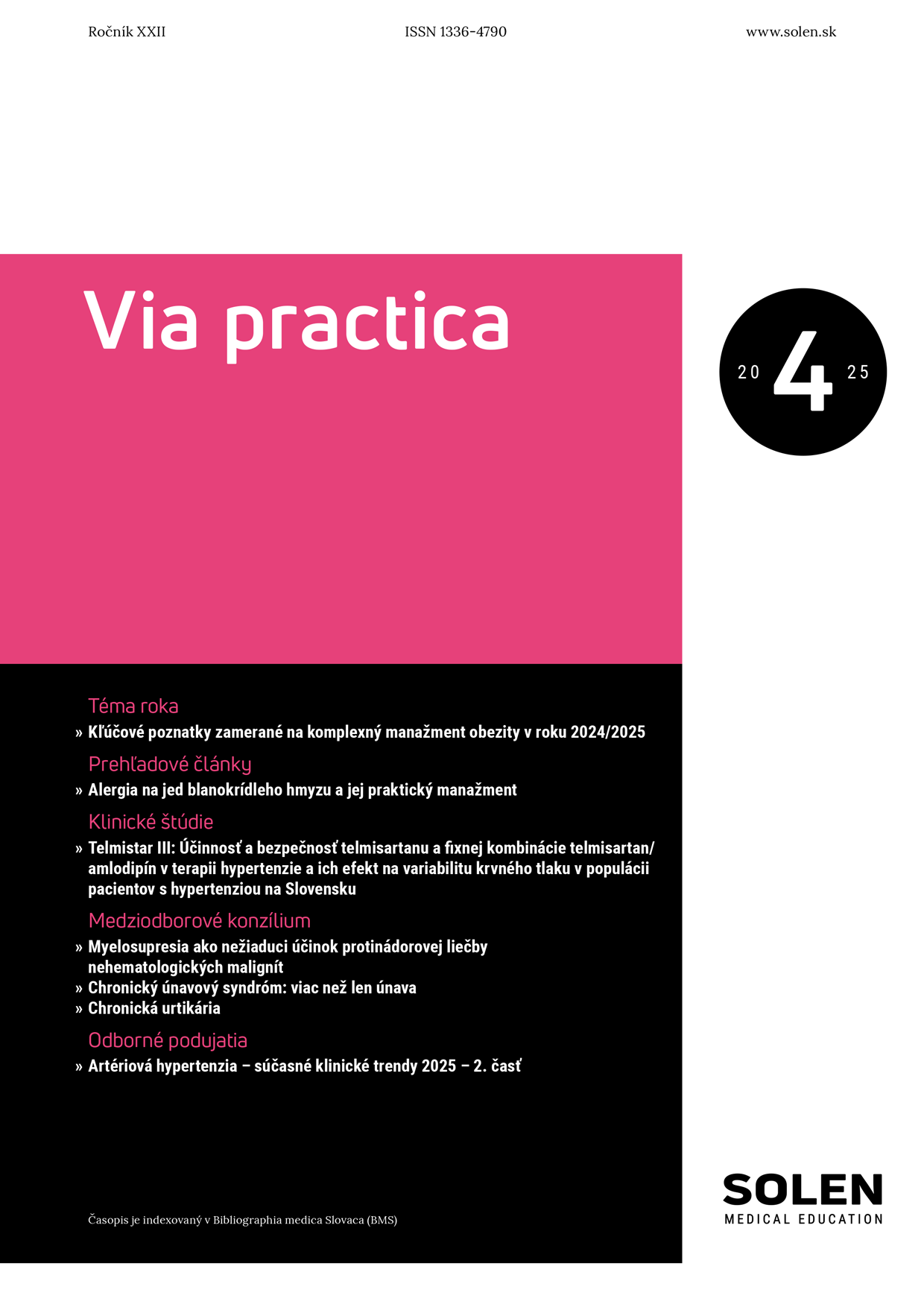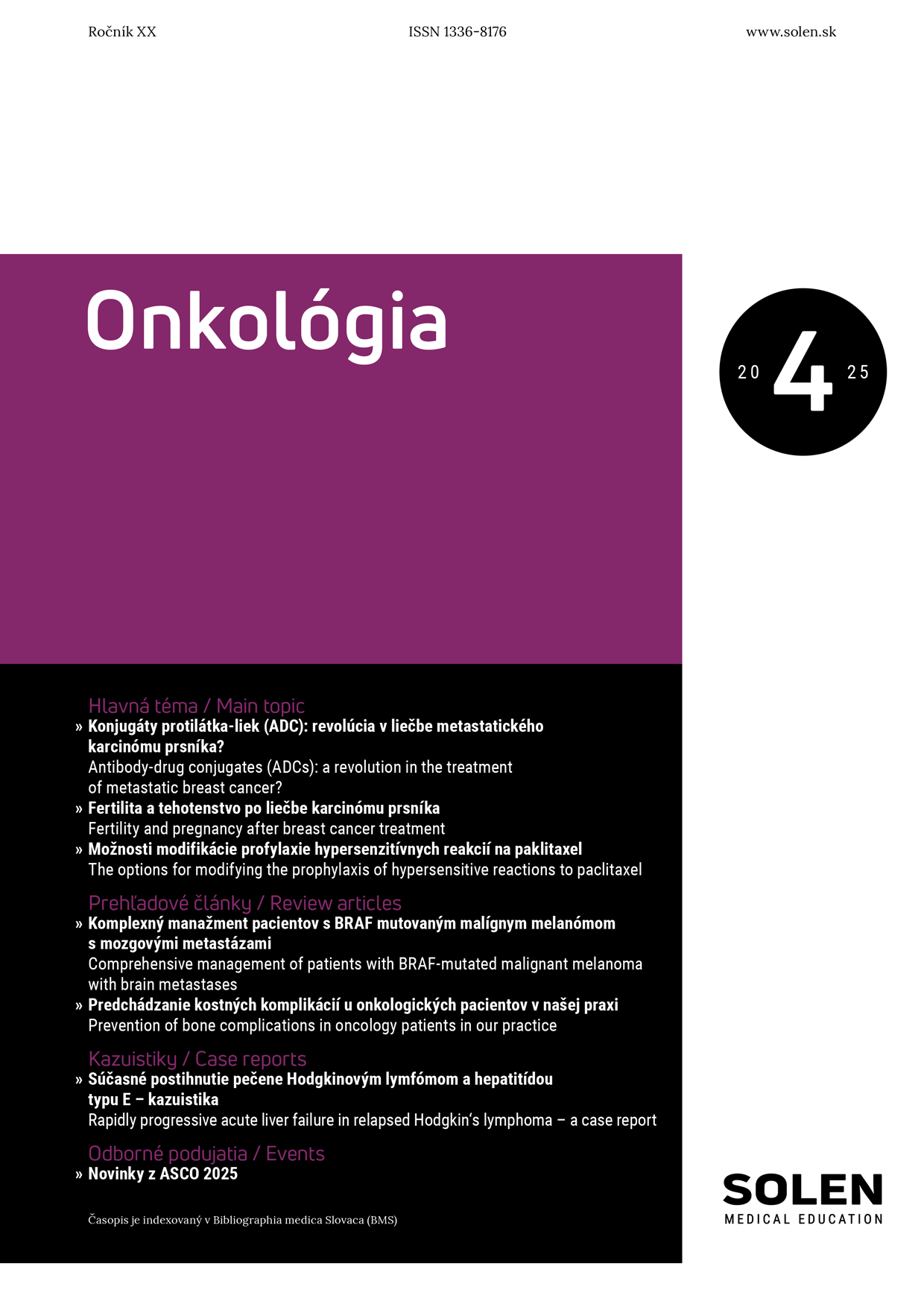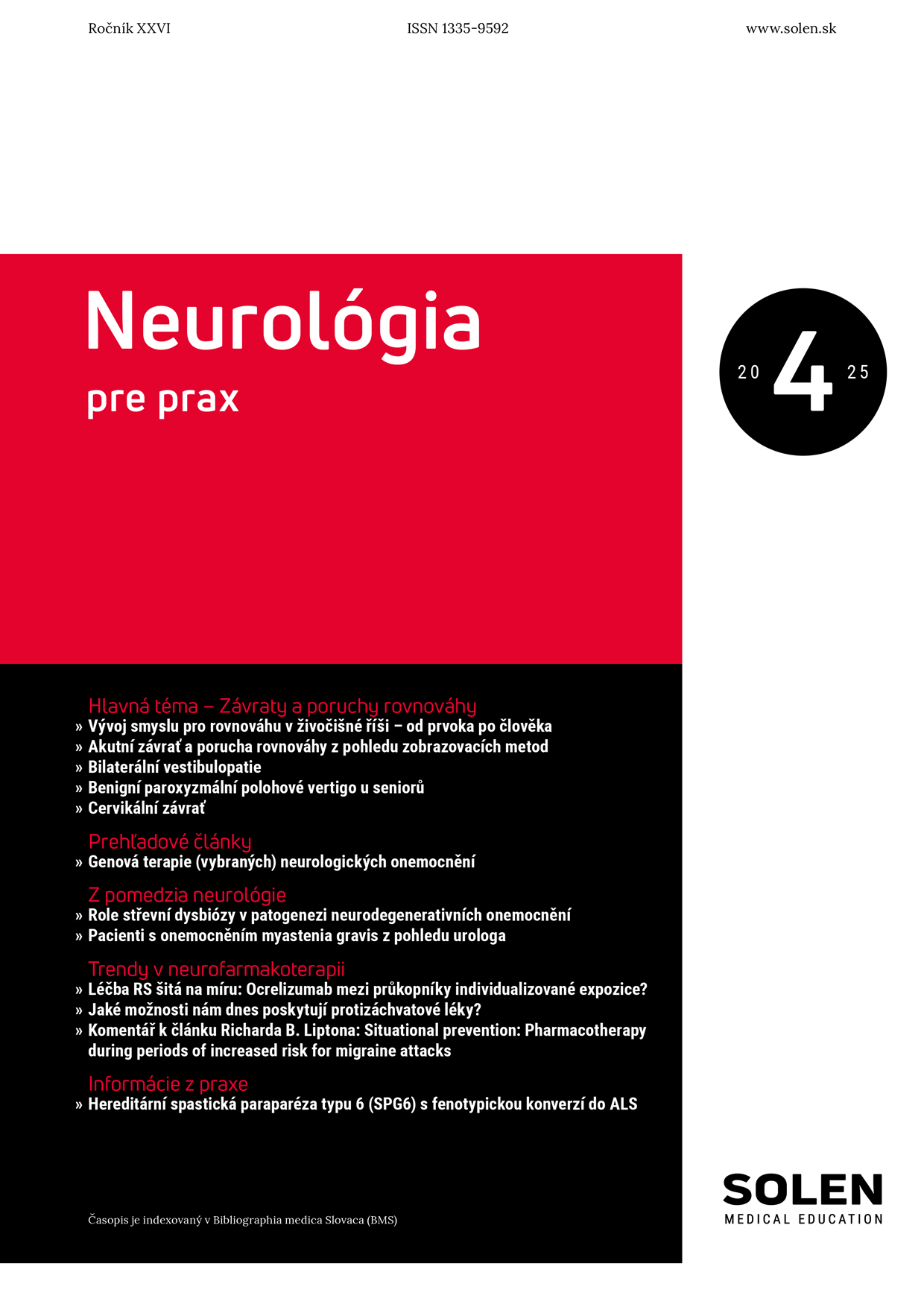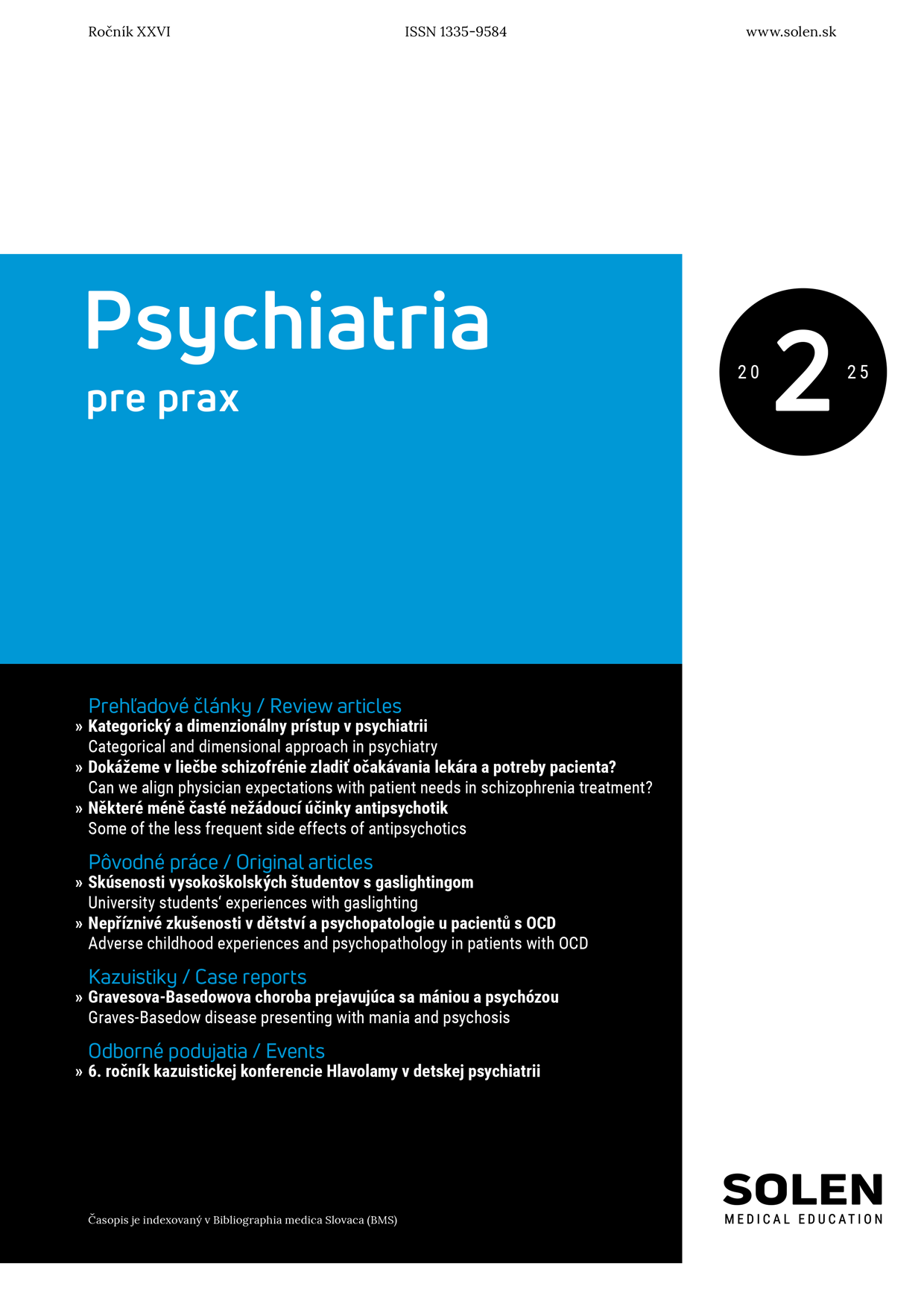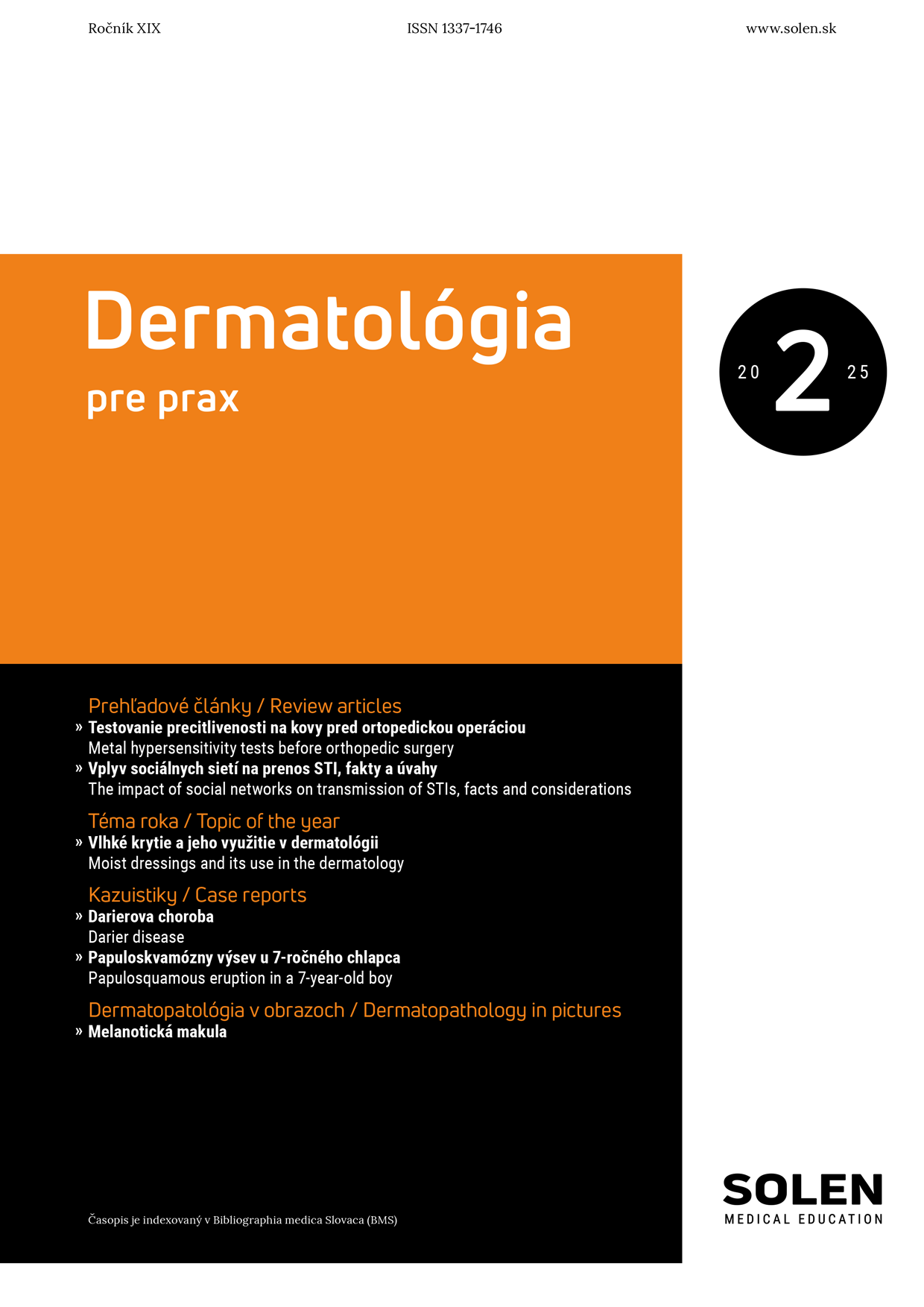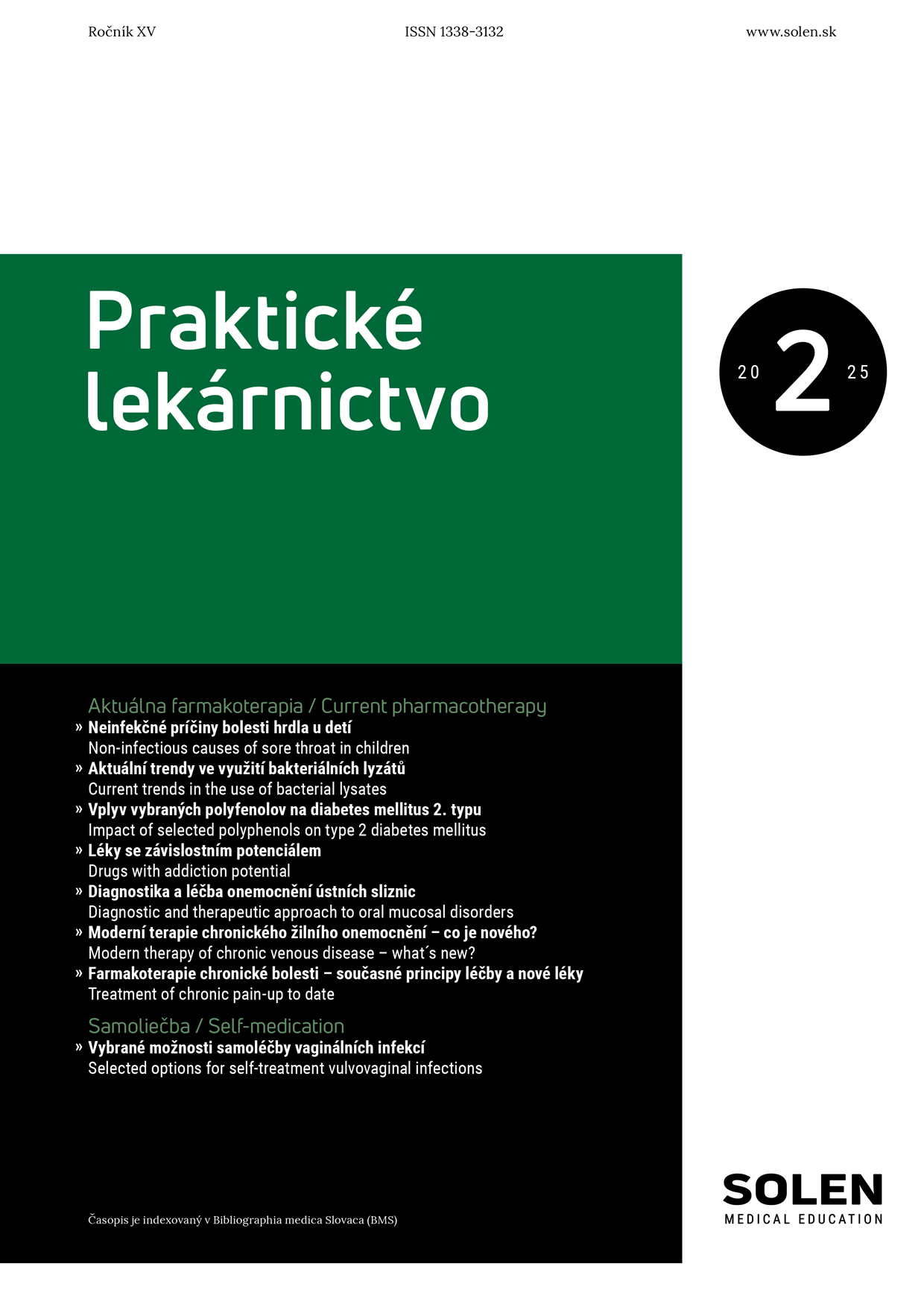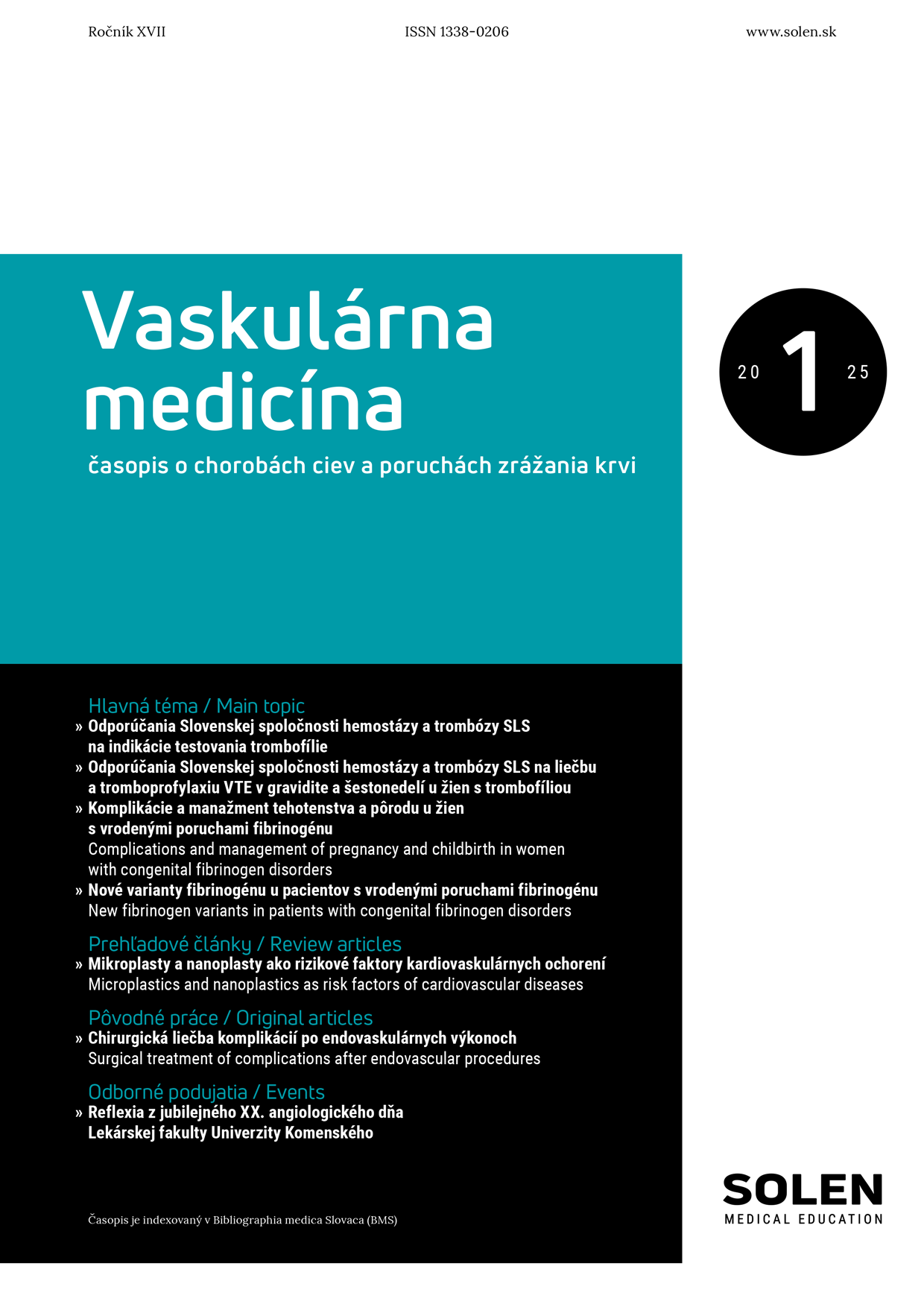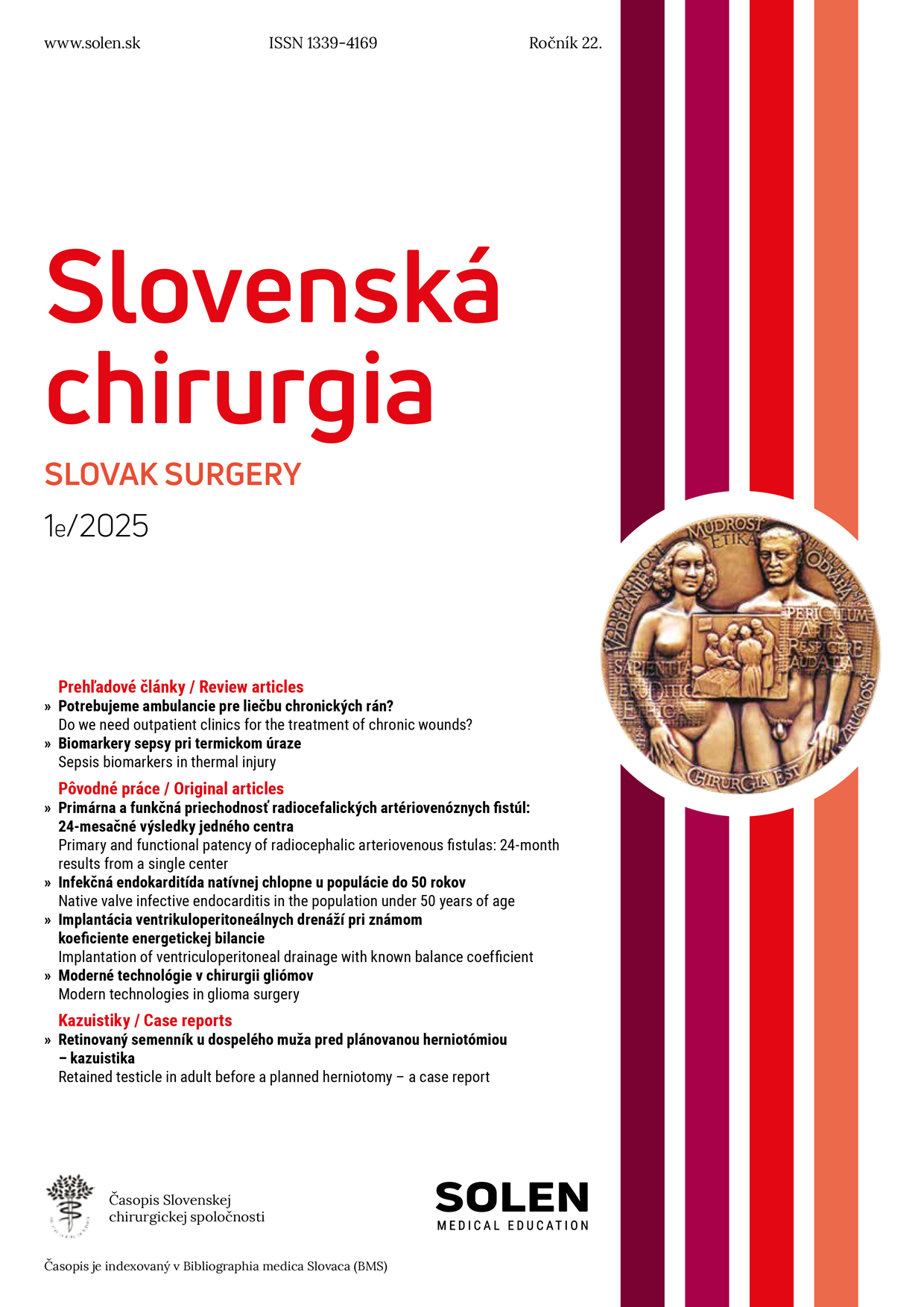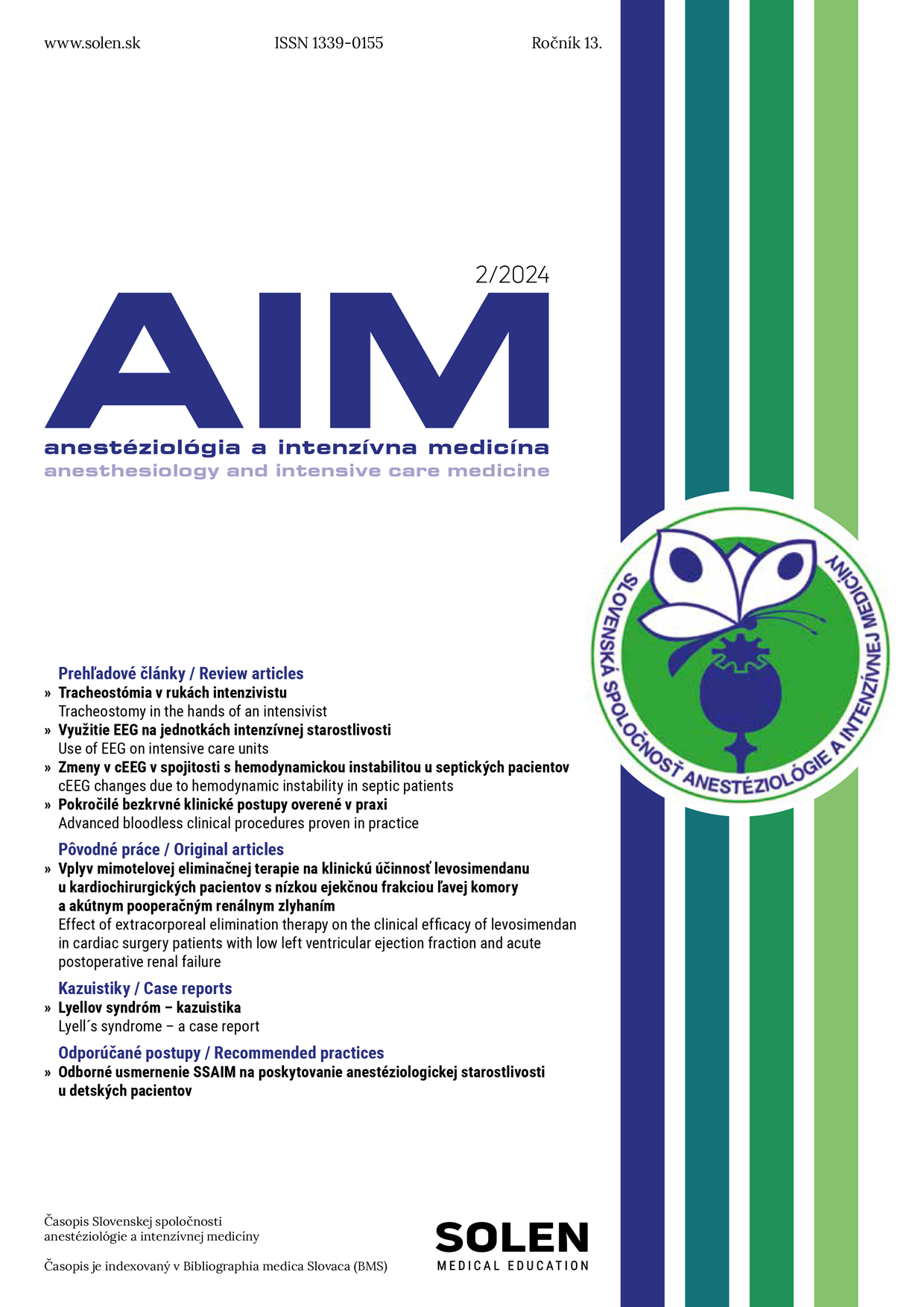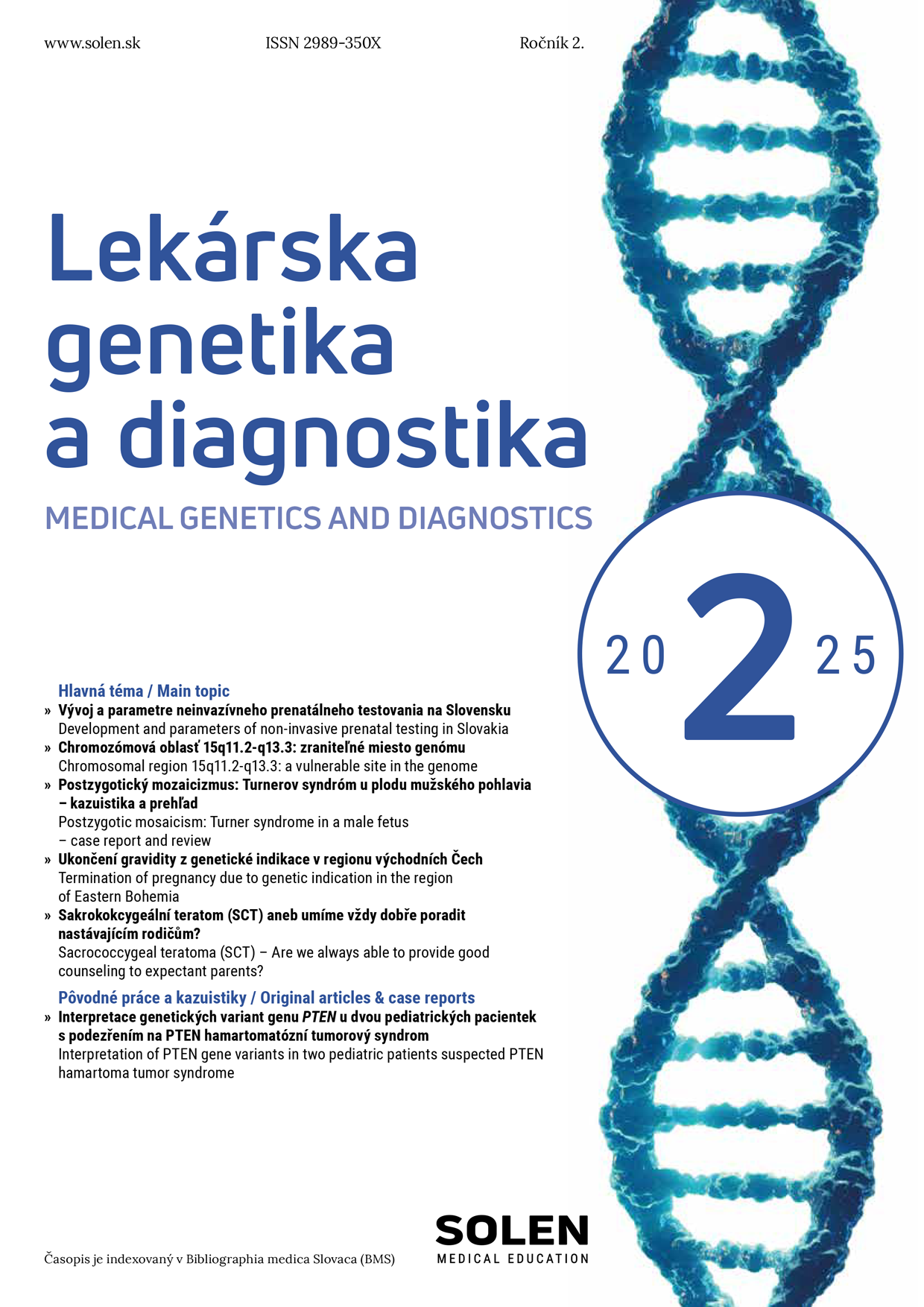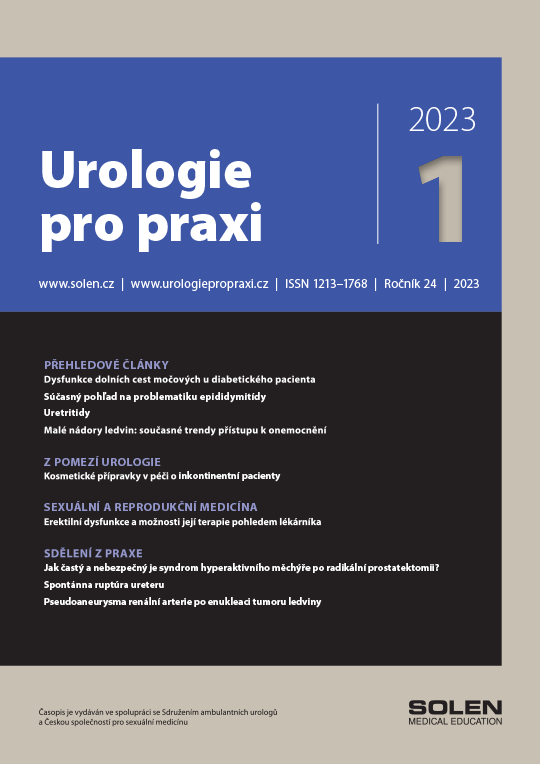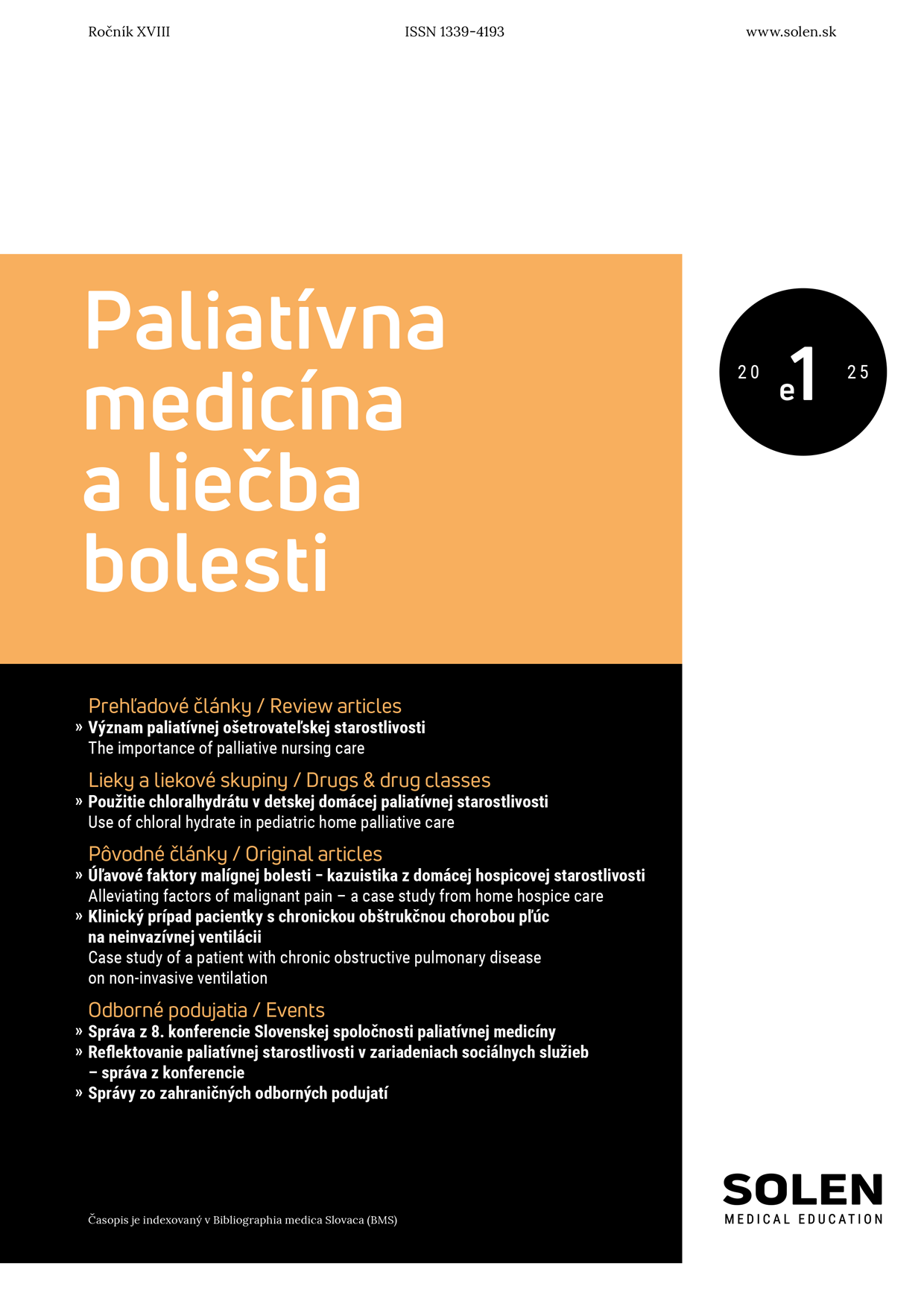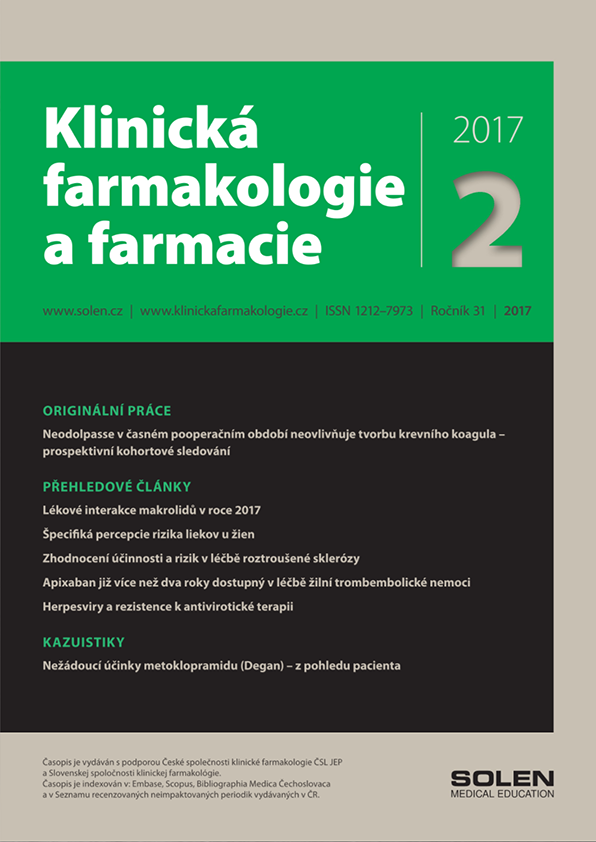Vaskulárna medicína 2/2024
Periférne arteriovenózne malformácie
Doc. MUDr. Mária Rašiová, PhD., MUDr. Veronika Pavlíková, MUDr. Marek Hudák, PhD., MUDr. Lucia Dekanová, PhD., MUDr. Zuzana Tormová, MUDr. Marta Bavoľárová, MBA, MUDr. Viktor Kožár, MUDr. Ľudmila Farkašová, PhD.
Arteriovenózne malformácie (AVM) sú považované za najnebezpečnejšie vaskulárne malformácie. Vznikajú poruchou vaskulárneho vývoja v skorom embryonálnom období a tvoria približne 1,5 % zo všetkých vaskulárnych anomálií. Extrakraniálne (periférne) AVM sa najčastejšie nachádzajú na hlave, krku a končatinách. Sú prítomné pri narodení a ich progresia môže byť stimulovaná traumou, nevhodnou chirurgickou/endovaskulárnou liečbou a hormonálnymi zmenami. Klinické symptómy závisia od miesta lokalizácie, rozsahu, typu a štádia AVM. Liečba AVM by mala byť realizovaná odborníkmi so skúsenosťami v liečbe AVM v rámci multidisciplinárneho špecializovaného centra, pričom cieľom liečby AVM je kontrola progresie a krvácania. Endovaskulárna liečba je terapiou prvej voľby, pričom hlavným cieľom je eliminácia nidusu považovaného za zdroj recidívy. Recidíva difúznych AVM po endovaskulárnej a chirurgickej liečbe je častejšia ako recidíva väčšiny malignít. Pacienti zvyčajne v priebehu života vyžadujú viacnásobné liečebné zásahy, pretože úplné vyliečenie difúznej AVM je často nemožné. Vzhľadom na nález mutácií v génoch ovplyvňujúcich molekulárne mechanizmy AVM prebiehajú štúdie s rôznymi liečivami (trametinib, bevacizumab, pazopanib a talidomid) pre terapiu komplexných, rozsiahlych, difúznych a recidivujúcich AVM.
Kľúčové slová: arteriovenózne malformácie, embolizácia, klasifikácia, liečba
Peripheral arteriovenous malformations
Arteriovenous malformations (AVM) are considered the most dangerous vascular malformations. They are result of vascular development disorder in the early embryonic period and make up approximately 1.5% of all vascular anomalies. Extracranial (peripheral) AVMs are most commonly found in the head, neck, and extremities. They are present at birth and their progression can be stimulated by trauma, inappropriate surgical/endovascular treatment and hormonal changes. Clinical symptoms depend on the location, extent, type and stage of the AVM. AVM treatment should be performed by experts with experience in AVM treatment within a multidisciplinary specialized center. The aim of AVM treatment is to control progression and bleeding. Endovascular treatment is the treatment of first choice, with the main goal being the elimination of the nidus considered to be the source of recurrence. Recurrence of diffuse AVMs after endovascular and surgical treatment is more frequent than the recurrence of most malignancies. Therefore, patients usually require multiple treatment interventions during their lifetime. The complete cure of large and diffuse AVM is often impossible. Due to the discovery of mutations in genes affecting the molecular mechanisms of AVMs, studies are underway with various drugs (trametinib, bevacizumab, pazopanib and thalidomide) for the therapy of complex, extensive, diffuse and recurrent AVMs.
Keywords: arteriovenous malformation, embolisation, classification, treatment


